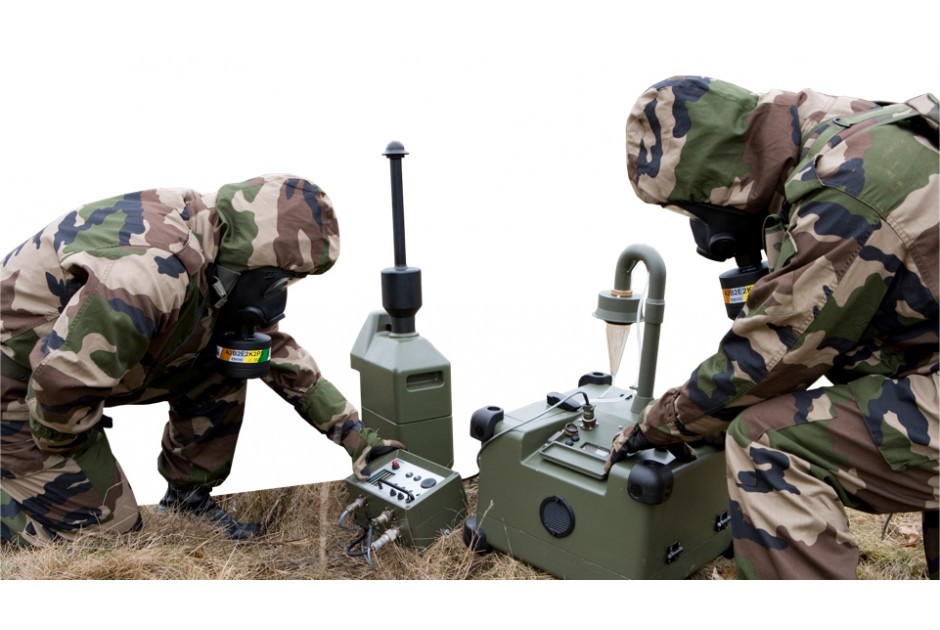ISO 2631 1 Whole body vibration exposure assessment testing
The ISO 2631-1 standard is a pivotal framework in evaluating whole body vibration (WBV) exposure, which is critical for ensuring the safety and comfort of personnel subjected to such environments. This standard provides methodologies for measuring and assessing WBV, which is particularly relevant in sectors like military testing, where prolonged exposure can have significant impacts on human health.
ISO 2631-1 focuses specifically on the measurement of mechanical vibration transmitted through a surface to a seated or standing person. The standard covers the assessment of both vertical and lateral components of WBV, which are essential for understanding the cumulative effects on human body systems. This is particularly important in military testing, where personnel may be exposed to vibrations from various sources such as heavy machinery, vehicles, and aircraft.
The testing process involves the use of accelerometers placed at strategic locations on the test subject's body, typically including the seat or vehicle floor for vertical components and the hip or chest for lateral components. The data collected is then processed to determine the vibration exposure index (VEI), which quantifies the potential risk associated with WBV.
The methodology outlined in ISO 2631-1 ensures that the testing process is standardized, allowing for consistent and reproducible results across different environments and applications. This standardization is crucial in military testing, where compliance with international standards can ensure the safety of personnel and the reliability of equipment.
The importance of this testing cannot be overstated, especially given the potential health risks associated with prolonged exposure to WBV. The standard also provides guidelines for reducing vibration exposure through design modifications or operational changes, which is essential in the development and evaluation of military equipment.
By adhering to ISO 2631-1, organizations can ensure that their testing protocols are up-to-date with international best practices, thereby enhancing the safety and comfort of personnel. This standard is particularly applicable in sectors like defense manufacturing, where rigorous testing procedures are necessary to meet stringent quality and compliance requirements.
The implementation of ISO 2631-1 also facilitates better decision-making during the design and development phases of military equipment. By understanding the potential WBV exposure, engineers can incorporate more effective vibration control measures into their designs, leading to safer and more efficient equipment.
Why It Matters
The importance of ISO 2631-1 in military testing cannot be underestimated. Whole body vibration can have significant impacts on human health, particularly for personnel exposed to such environments over extended periods. The standard provides a robust framework for measuring and assessing WBV exposure, ensuring that the potential risks are identified and managed effectively.
The assessment of WBV is critical in military testing as it helps in evaluating the safety and comfort of personnel working with various types of equipment. By adhering to this standard, organizations can ensure that their testing protocols meet international best practices, thereby enhancing the overall quality and reliability of their products.
ISO 2631-1 also plays a vital role in reducing the risk of long-term health issues associated with WBV exposure. By providing guidelines for minimizing vibration exposure through design modifications or operational changes, this standard helps to create safer working environments for military personnel.
The implementation of ISO 2631-1 ensures that organizations are in compliance with international standards, which is essential for maintaining a high level of quality and reliability. This standardization also facilitates better decision-making during the design and development phases of military equipment, leading to more effective vibration control measures.
Ultimately, ISO 2631-1 helps to protect personnel by ensuring that they are not exposed to unnecessary risks associated with WBV exposure. By adhering to this standard, organizations can contribute to a safer working environment and enhance the overall safety and comfort of their personnel.
Industry Applications
| Application | Description |
|---|---|
| Military Equipment Testing | Evaluating the impact of vibrations on personnel exposed to military vehicles and equipment. |
| Aircraft Cabin Comfort Analysis | Assessing WBV exposure for pilots and crew during flights. |
| Mining Operations Safety | Evaluating the safety of personnel working in mining environments with high vibration levels. |
| Heavy Construction Machinery Testing | Ensuring that operators are not exposed to harmful vibrations during operation. |
| Railway Vehicle Design | Evaluating the potential impact of vibrations on passengers and crew during rail travel. |
| Marine Vessel Operation | Assessing WBV exposure for personnel working on naval vessels. |
Environmental and Sustainability Contributions
The implementation of ISO 2631-1 in military testing contributes significantly to environmental sustainability. By minimizing the vibrations experienced by personnel, this standard helps reduce the overall impact on the environment. Reduced vibration exposure can lead to less fatigue among operators, which in turn reduces the need for extended rest periods and increases operational efficiency.
Moreover, ISO 2631-1 facilitates better decision-making during the design and development phases of military equipment, leading to more effective vibration control measures. This not only enhances safety but also contributes to a more sustainable use of resources by optimizing equipment performance and longevity.
The standard ensures that personnel are not exposed to unnecessary risks associated with WBV exposure, thereby promoting safer working environments. By adhering to this standard, organizations can contribute to the overall well-being of their personnel, which is crucial for maintaining high levels of operational effectiveness and sustainability.





